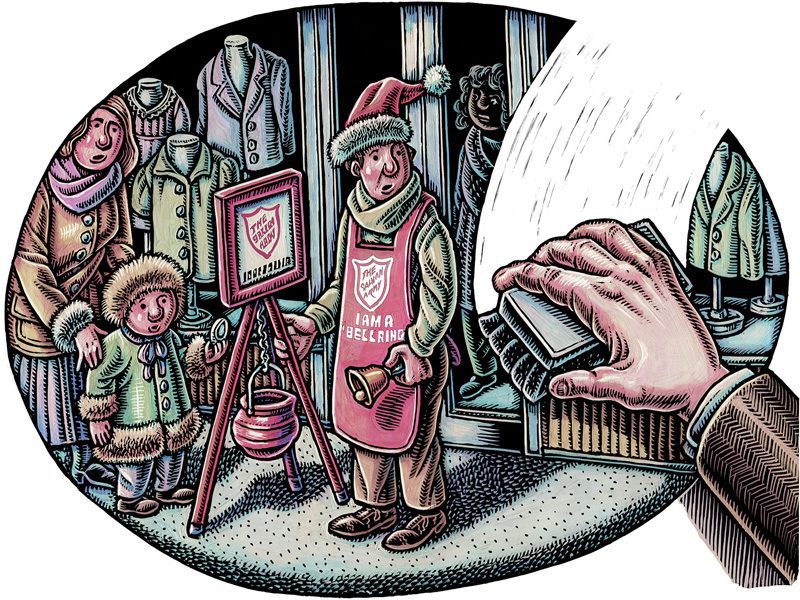Religion as a weapon
by Robert Docter, Editor-In-Chief –
Personally, I am not at all partial to people who choose to use religion as a weapon.
I hear some of this diatribe on religious talk-radio and, occasionally, on television from people you’d think should know better.
They seem to present a point of view that says: “If you don’t believe exactly the way I believe, you’re ‘bad;’ and if you don’t worship as I worship, you’re not to be trusted or supported; and if you don’t behave according to my rules of conduct, meet me at the railway station because you’re leaving town; and if you, somehow, refuse to embrace my form of orthodoxy, you need to be excluded, isolated, branded, diminished, or marginalized.”
This level of dehumanization denies people the right to live.
Roger didn’t will-co.
“Take that!” the Puritans said to Roger Williams as they pushed him out of the Massachusetts Bay Colony with the threat of deportation. He couldn’t abide the forced uniformity of worship and believed fully in “soul-liberty.” He had the heretical idea that people should have the right to freedom of worship. He fled south into the arms of Chief Narragansett, bought some land from him, established the colony of Providence and started Rhode Island—a haven for Jews, Catholics and other people different from the norm.
I’m not sure we deal with difference—especially religious difference, any better today than we did in the 1630s. Williams was banished. Today, too many of us want those we see as dangerously different so ostracized, so banished that they are non-persons. Some even suggest the world would be better if they were dead—and some even go about the task of accomplishing it—a clear form of fascism.
How’d we get that way?
I’ve been trying to figure out how and why all this happens. Here are some thoughts.
We live in a world of increased mobility and increasingly porous cultural, tribal, and national boundaries.
We’re not yet easy with the differences that this increase in multiculturalism brings. Somehow, the anticipation of an unwelcome change scares us. This is especially true when the difference stems from a different belief-system. We can’t see it. We can’t understand it. We can’t debate it. It’s against the rules of some churches even to learn about it. It scares us.
We don’t know how to act as we hear people speaking languages we can’t identify, dressing in highly different ways and embracing sets of values somewhat divergent from our own. Their places of worship and the content of their worship appear very different from ours. We make up ugly, negative slur words to describe them, and some even find ways to stimulate a physical confrontation—using their belief system as justification.
Why do we do it?
I suspect several motives combine to form this kind of hostility. Fear is close to the top. It’s one of the human organism’s strongest motives and, where it is irrational, one of the ugliest reasons imaginable to do almost anything.
The fear comes from a perception of difference in the other. More often than not that difference is based on a different worldview, often religious in nature. The fear generates a feeling of danger and impending threat. This, then, is catastrophized as the perceiver’s anxiety escalates. The result becomes either flight or fight. “If those people join the church, I’m out of here.” Sometimes the “fight” is very polite. Picture this scene from a church council: “I move that we hire another pastor like ‘them’ and let that group start their own church, using our building for the first year.”
The product of religious weaponry
We see the results of using religion as weapon in the headlines of tomorrow’s newspapers. What are the reasons Shi’ites fight the Sunnis in Iraq? Both embrace the Muslim faith, but their fighting originally erupted over who is the rightful successor to the Prophet Muhammad following his death in 632 AD. The fight has escalated over time, and now revenge, economics, and power play significant parts along with religion.
Ireland has had its turbulence as well. While beginning as a British-Irish fight when Britain tried to annex the island during the 13th century reign of Henry II, religion and revenge became the primary twentieth century motives for the conflict. Ulster, Northern Ireland, had filled up with Protestants due to encouraging immigration from Britain. Erie, the Republic of Ireland,was preponderantly Catholic. Partition of the island occurred in 1921. In 1969 a series of conflicts erupted between the small Catholic population and the large Protestant population of Ulster. A tentative end to the struggle has been achieved politically.
For years, the Tutsi tribe of the Belgian Congo, with only 14 percent of the population, were the aristocracy, while the Hutus, 85 percent of the population, were the peasants.
As Belgium left and Rwanda became independent, the Hutus assumed power. The tragic death in a plane crash of the Rwanda president triggered acts of genocide resulting in the deaths of 750,000 Tutsis and 50,000 Hutus. This was a class struggle —the product of marginalization of one group by another.
Conclusions
This nation continues to become more diverse and multicultural. On the surface all are respected, and our immigrants are warmly welcomed. They are different. They bring with them divergent belief systems that trigger fear in some Americans. Some pronouncements by highly visible Christian religious practitioners have the potential of escalating this fear in a manner that emulates the actions of fascist dictators. Their method involves the use of a rigid and restrictive orthodoxy they seek to impose on other Christian believers. Their product is division among Christians and isolation from other faiths.











